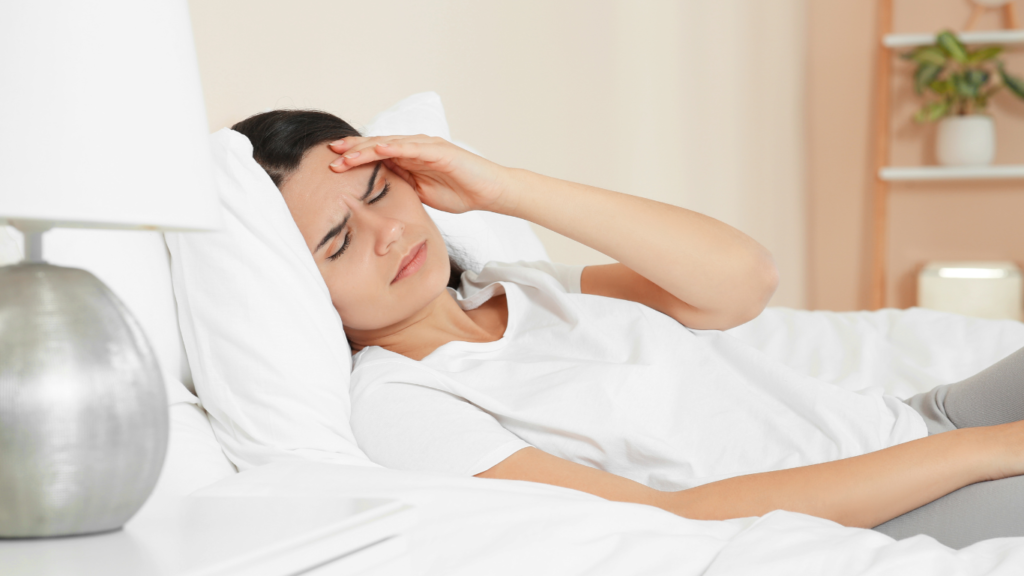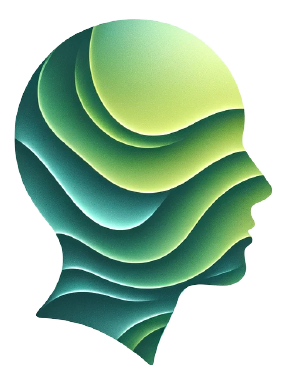Understanding the Complex Relationship Between Migraine and Hormones


Among Americans, 17.1% of women and 5.6% of men suffer migraines.1 Both genders often experience a link between their migraines and hormone shifts. A growing body of research suggests that both male and female sex hormones could influence the course of tension-type and migraine headaches. What hormones are involved and how can these hormone migraines be managed?
Key takeaways
- Both men and women experience hormone-related migraines
- Migraines are triggered by fluctuations in estrogen and other hormones
- Researchers cite practical tips for reducing “hormone migraines”
What hormones are linked to migraines?

For women, the migraine trigger seems to be the hormone imbalance created by fluctuations in estrogen and progesterone during the menstrual cycle — and also during pregnancy and menopause. Men’s hormonal migraines are also linked to fluctuations in estrogen as well as an imbalance (or deficiency) in androgen and testosterone.2
Estrogen and Migraines: A Double-Edged Sword

Estrogen is a powerful hormone that influences various physiological processes in the body, including pain perception and the regulation of blood vessels. Fluctuations in estrogen levels, such as those that occur during the menstrual cycle, pregnancy, or menopause, can trigger migraines in susceptible individuals.
Interestingly, while some women experience relief from migraines during pregnancy—a time when estrogen levels are high—others may develop migraines for the first time or experience worsening symptoms. This suggests that the relationship between estrogen and migraines is complex and varies from person to person.
Let’s take a look at the specific types of migraines these hormones may trigger.
Menstrual Migraines: Unveiling the Monthly Cycle of Pain
Menstrual migraines are triggered by a drop in estrogen. Other migraines may be triggered by stress, missing a meal, caffeine, or many other reasons. Menstrual migraines typically happen in the days leading up to menstruation or during menstruation itself. These migraines are often more severe, longer-lasting, and less responsive to treatment compared to migraines that occur at other times of the month.
Among women who suffer migraines, one study found that 60% of them noted a link between their menstrual cycle and migraines.3
The exact mechanisms behind menstrual migraines are still being investigated, but fluctuations in estrogen and progesterone levels appear to play a significant role. Estrogen, in particular, is thought to have a complex relationship with migraine headaches. As estrogen levels drop right before menstruation, it can trigger migraines in susceptible individuals.
Menopause and Migraines: Navigating Hormonal Changes

Menopause marks the end of a woman’s reproductive years and is characterized by a significant decline in estrogen and progesterone levels. For many women, this hormonal shift coincides with changes in migraine patterns. Some women may experience relief from migraines after menopause, while others may find that their migraines worsen or become more frequent.
Hormone replacement therapy (HRT) is sometimes used to manage menopausal symptoms, including migraines. However, the decision to use HRT should be made carefully, weighing the potential benefits against the risks, including an increased risk of stroke and certain types of cancer.
Birth Control Migraines: Balancing Hormonal Contraception
For some women, hormonal contraceptives such as birth control pills, patches, or rings can be associated with an increased risk of migraines. This is particularly true for women who experience menstrual migraines or those with a history of hormone-related headaches.
However, not all hormonal contraceptives have the same effect on migraines. Some women may find relief from migraines with certain types of birth control, while others may need to explore non-hormonal contraceptive options. It’s essential for women to discuss their migraine history with their healthcare provider when considering birth control options to find the most suitable method.
Progesterone and Migraines: The Role of the “Pregnancy Hormone”
Progesterone is another hormone that plays a crucial role in the menstrual cycle and pregnancy. Like estrogen, fluctuations in progesterone levels can influence migraine susceptibility in some individuals.
While estrogen is often implicated in menstrual migraines, progesterone may also play a role, particularly in the days leading up to menstruation. Some women may find that their migraines are more likely to occur during this phase of the menstrual cycle when progesterone levels are declining.
Hormone Migraines in Men
In the last few years, more attention has been given to study sex hormones’ role in triggering men’s migraines. W.P. J. van Oosterhout, MD (author of a pivotal study) notes that “previous research found that levels of estrogen can influence when women have migraines and how severe they are, but little was known about whether sex hormones also affect migraine in men. Our research found increased levels of estrogen in men with migraine, as well as symptoms of lower levels of testosterone.”4
The Migraine Cycle: Breaking the Pattern
Migraines often occur in a cyclical pattern, with individuals experiencing phases of prodrome (warning signs), aura (if applicable), headache, and postdrome (recovery). Hormonal fluctuations can influence the timing and severity of each phase of the migraine cycle.
Breaking the migraine cycle often requires a comprehensive approach that addresses both acute symptom management and preventive strategies. This may include a combination of medication, lifestyle modifications, stress management techniques, and hormonal therapies tailored to the individual’s specific needs and migraine triggers.
Let’s look at some effective approaches for breaking the migraine cycle.
Hormonal Headache Treatment: Targeting the Underlying Cause
Hormones have direct influence on cellular excitability and blood vessels in the brain.5 Hormonal headache treatments focus on defusing this impact by addressing the hormonal imbalance.
1. Anti-inflammatory treatments:
- NSAIDs (nonsteroidal anti-inflammatory medications) are commonly used for hormonal migraine, especially ketoprofen (Orudis®) and ibuprofen (Advil® and Motrin®). Use of these drugs, however, is usually not recommended for pregnant migraine sufferers. For all migraine sufferers, they also pose a risk for gastric bleeding. In addition, there is the risk of developing MOH (medication overdose headache) which actually causes new migraine attacks.
- Butterbur (the Petadolex® extract form: Petasites hybridus). The butterbur herb contains well-documented antihistamine/anti-inflammatory properties. However, only Petadolex is made using a patented extraction process that removes butterbur’s naturally occurring liver toxins. Regular use as a migraine preventive can help tone blood vessels so they are less likely to become inflamed and spasm when estrogen rises or other hormones fall.
2. Brain nutrition
Increasing the “brain nutrients” in your diet. Migraine research has found many male and female migraine sufferers have deficiencies of three critical nutrients: magnesium, Vitamin B2 (riboflavin) and Co-enzyme Q10.
So, what foods can help relieve hormonal migraines? Start with green leafy vegetables, nuts, seeds, and legumes. These are rich in magnesium which can help prevent migraines naturally by regulating estrogen levels and relaxing blood vessels. Foods rich in omega-3 , such as fish and flaxseed, can also help reduce inflammation and pain
Since it is hard to get the blend and potency of key brain nutrients from diet alone, doctors often recommend the Dolovent™ dietary supplement. It provides more than 20 vitamins, minerals and antioxidants specifically known to support healthy functioning of the brain’s cells, nerves and blood cells.
Also, small, frequent snacks help keep blood sugar levels steady to avoid spikes and drops in blood sugar that can trigger migraine attacks. Never miss a meal.
3. Lifestyle Approaches
- Learn relaxation techniques
- Avoid too little or too much sleep, and keep a regular sleep pattern.
- Avoid stress when you can, and learn how to manage it when you can’t.
- Keeping a migraine diary to identify triggers and patterns associated with your migraines
4. Hormone Replacement Therapy (HRT)
Effective treatment of hormone-related migraines often involves addressing the hormonal imbalance. Hormonal therapies, such as hormonal contraceptives or hormone replacement therapy (HRT), may be prescribed to regulate hormone levels and reduce the frequency and severity of migraines.
Conclusion
In conclusion, the relationship between migraines and hormones is intricate and multifaceted. Hormonal fluctuations, particularly those related to estrogen and progesterone, can trigger migraines in susceptible women and men. Understanding these hormonal influences is crucial for developing effective treatment and management strategies that address the underlying hormonal imbalance and help break the cycle of migraine pain. Working closely with healthcare providers to identify triggers, track symptoms, and tailor treatment plans can empower individuals to regain control over their hormonal migraines and improve their quality of life.
Sources
- Walter, K. (2020). What Is Migraine? JAMA, (327(1):93). https://doi.org/10.1001/jama.2021.21857
- Shields, L. (n.d.). Testosterone levels in men with chronic migraine – PMC. National Institutes of Health (NIH) (.gov). https://www.ncbi.nlm.nih.gov › articles › PMC6589638
- Cleveland Clinic (n.d.). Menstrual Migraines/Hormone Headaches. My Cleveland Clinic. https://my.clevelandclinic.org/health/diseases/8260-menstrual-migraines-hormone-headaches
- Van Oosterhout, W. (n.d.). Men with Migraine May Have Higher Estrogen Levels. AAN PressRoom.https://www.aan.com/PressRoom/Home/PressRelease/1657#:~:text=%E2%80%9COur%20research%20found%20increased%20levels,known%20to%20affect%20hormone%20levels.
- Sacco, S., & Ricci, S. (2012). Migraine in women: The role of hormones and their impact on vascular diseases. J Headache Pain, 13(3.), 177-189. https://doi.org/ 10.1007/s10194-012-0424-y

Natural Remedies
2 Aug 2024
5 min read
Can weather cause migraine headaches? A forecast for fewer headache days
For centuries, individuals afflicted with migraines have reported a curious phenomenon: their headaches seem to wax and wane with changes in the weather. From the onset of a storm, to shifts in temperature, humidity or barometric pressure, the connection between migraine and weather has long captured the attention of scientists and sufferers alike. In this […]

Alternative Therapies
2 Aug 2024
7 min read
Understanding the Complex Relationship Between Migraine and Hormones
Among Americans, 17.1% of women and 5.6% of men suffer migraines.1 Both genders often experience a link between their migraines and hormone shifts. A growing body of research suggests that both male and female sex hormones could influence the course of tension-type and migraine headaches. What hormones are involved and how can these hormone migraines be managed? […]

Mind-Body Techniques
2 Aug 2024
5 min read
Triptans for Migraines: A Comprehensive Guide
Triptan medications have long been a mainstay of migraine treatment. In this article, we delve into what triptans are, how they work, potential triptan side effects, alternatives, and considerations for special populations such as pregnant individuals. What Are Triptans? Triptans are a class of drugs specifically designed to treat migraines. They work by targeting serotonin […]



